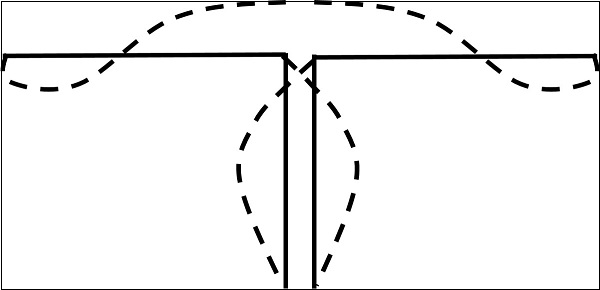
- Antenna Theory - Fundamentals
- Antenna Theory - Basic Parameters
- Antenna Theory - Parameters
- Antenna Theory - Near & Far Fields
- Antenna Theory - Radiation Pattern
- Isotropic Radiation
- Antenna - Beam & Polarization
- Antenna Theory - Beam Width
- Antenna Theory - Reciprocity
- Antenna Theory - Poynting Vector
- Types of Antennas
- Antenna Theory - Types of Antennas
- Antenna Theory - Wire
- Antenna - Half-Wave Dipole
- Antenna - Half-Wave Folded Dipole
- Antenna - Full-Wave Dipole
- Antenna Theory - Short Dipole
- Antenna Theory - Long Wire
- Antenna Theory - V-Antennas
- Inverted V-Antenna
- Antenna Theory - Rhombic
- Antenna Theory - Loop
- Antenna Theory - Helical
- Antenna Theory - Aperture
- Antenna Theory - Horn
- Antenna Theory - Slot
- Antenna Theory - Micro Strip
- Antenna Theory - Lens
- Parabolic Reflector
- Antenna Arrays
- Antenna Theory - Antenna Arrays
- Antenna Theory - Collinear Array
- Antenna Theory - Broad-side Array
- Antenna Theory - End-fire Array
- Antenna Theory - Parasitic Array
- Yagi-Uda Antenna Theory
- Log-periodic Antenna Theory
- Turnstile Antenna Theory
- Wave Propagation
- Antenna - Spectrum & Transmission
- Antenna - Types of Propagation
- Antenna - Lonosphere & its Layers
- Terms in Wave Propagation
- Antenna Theory Useful Resources
- Antenna Theory - Quick Guide
- Antenna Theory - Useful Resources
- Antenna Theory - Discussion
Antenna Theory - Full-Wave Dipole
If the length of the dipole, i.e. the total wire, equals the full wavelength , then it is called as full wave dipole. If a full wavelength dipole is used either for transmission or for reception, let us see how the radiation will be.
Construction & Working of Full-wave Dipole
The full-wave dipole with its voltage and current distribution is shown here. Both the positive and negative peaks of the wave induce positive and negative voltages respectively. However, as the induced voltages cancel out each other, there is no question of radiation.
The above figure shows the voltage distribution of full-wave dipole whose length is . It is seen that two half-wave dipoles are joined to make a full-wave dipole.

The voltage pattern when induces its positive charges and negative charges at the same time, cancel out each other as shown in the figure. The induced charges make no further attempt of radiation since they are cancelled. The output radiation will be zero for a fullwave transmission dipole.
Radiation Pattern
As there is no radiation pattern, no directivity and no gain, the Full wave dipole is seldom used as an antenna. Which means, though the antenna radiates, it is just some heat dissipation, which is a wastage of power.
Disadvantages
The following are the disadvantages of full-wave dipole antenna.
- Heat dissipation
- Wastage of power
- No radiation pattern
- No directivity and no gain
Due to these drawbacks, the full-wave dipole is seldom used.